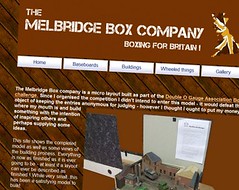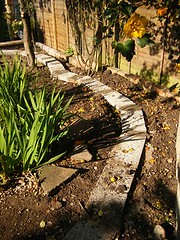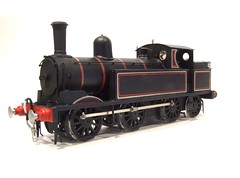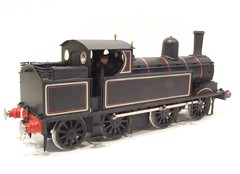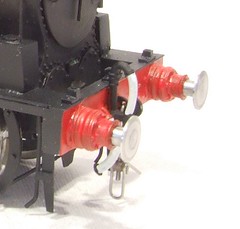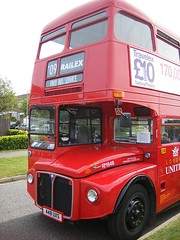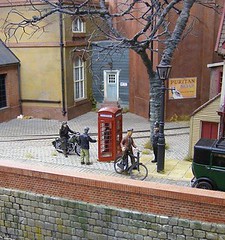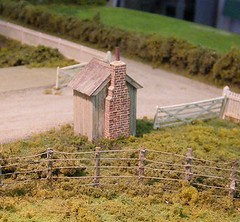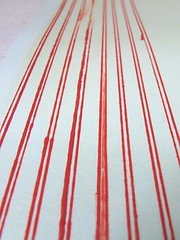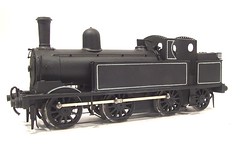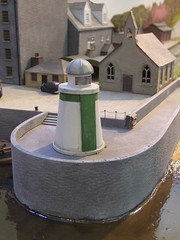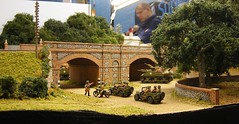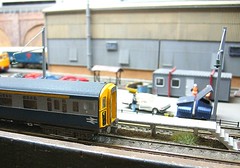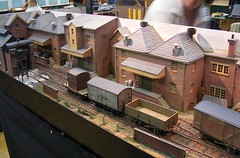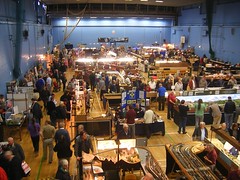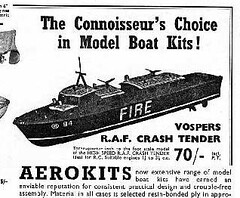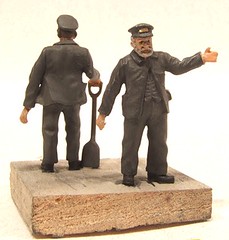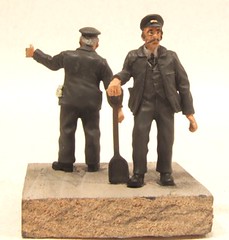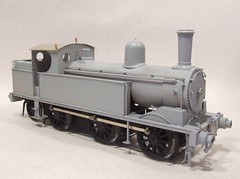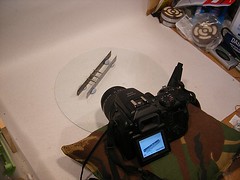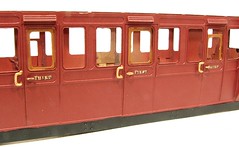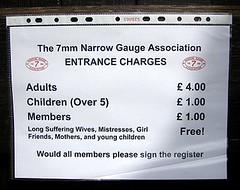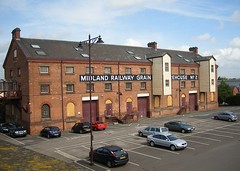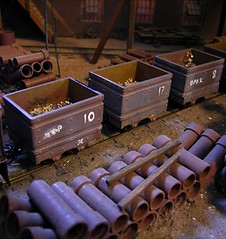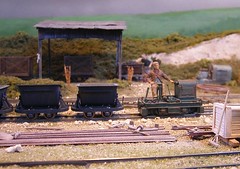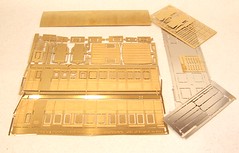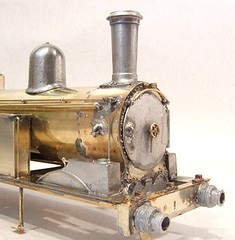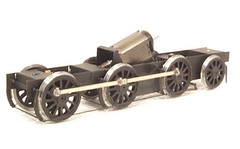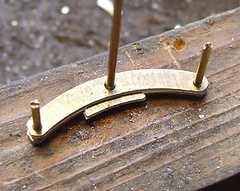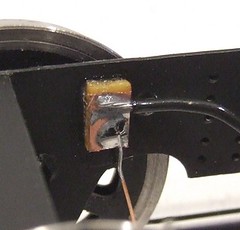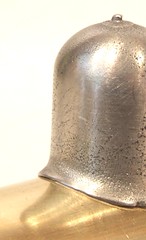Mog asked: I'm making a start in 3mm 'finescale' (14.2mm). Just having a go at my first ever chassis kit. I got a whitemetal J72 with NS chassis from 3SMR. A couple of questions I don't know if you have any advice?
Society wheels and axles.. am I right in thinking; slight chamfer on the end of axle, slight countersink in rear of wheel..ram axle into wheel (!). The 'shoulders' I'm guessing is where the back of the wheel should sit to be in gauge?
I haven't got anything like a chassis jig. 3SMR have run out. I'm trying a couple of mackles. Do you think it would work to solder up chassis spacers to one side, and then attach the other side?Big question there. Building a chassis is probably the most scary thing any railway modeller undertakes. You are trying to make something that looks good and more importantly, works well. When things go wrong there are a huge number of variables and the beginner can spend hours tweaking this and that, always in the hope that everything will work properly.
An analogy - chassis building is a bit like learning to juggle. When you start juggling throwing the balls in the right direction is difficult. Sometimes a throw goes too far, sometimes not far enough. Either way you can't get the catching hand to it and the juggle stops. As you get better, the throws get more accurate but at the same time the catching hand becomes able to deal with mis-throws and can pluck a ball out of the air from nearly anywhere.
The same thing with chassis building. Experience often comes with an increased toolkit - the modeller gets fed up with hassle building chassis and goes to buy some jigs to aid the process. Therefore the results are better and at the same time experience makes it easier to work out where the tweaks need to be carried out for best results.
However, back to our beginner with no jigs facing the dreaded etched parts that must be assembled and made to work or money spent on the kit will be wasted.
Stage 1: removed the chassis sides and compare them. Make sure the top edge, which is usually flat, and one of the ends are identical when the sides are placed against each other. The holes for the axle should also match up. If anything doesn't, try to make it so. Line the wheels up and file the back/front and top so they match each other. This gives you some datums to work with. If the axle holes don't match then you are a bit stuffed. If the kit is new, take it back. If it's second hand then put it aside and buy a new one. I could fix it but as a first effort, you would be better off cutting the sides out from scratch. To be honest it's unlikely you will find any problems but it
is important to check this.
Stage 2: Fit the spacers to one side of the chassis making sure they are perpendicular to the face of the sides. Some prefer to fit the front spacer to one side and the rear to the other. I don't think it matters much, especially if you are working methodically as there is no chance of heat build up. With the spacers in, place the chassis upside down on a sheet of glass, or at a pinch melamine board but glass is better, and tack the chassis together. Check everything for squareness. On it's back the chassis shouldn't rock on the glass (that's why you checked the top earlier) and a square should show that the checked ends are square. If all is well then solder up properly . Then check again. In theory the all important axles holes should be square.
Stage 3: Open out the axle holes to accept the bearings. Try not to make them too big as you want the bearing to be a tight fit and stay put with friction.
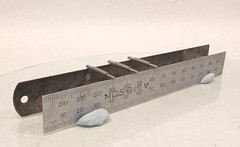
Stage 4: This is where jigs help enormously. Since we don't have any, we'll need to improvise. Set up a couple of identical steel rules on some glass. Hold them up with blobs of blu-tack either side bu not underneath. They need to be parallel and far enough apart that the ends of the axles sit on them.
Put the axles into the chassis and then onto this jig. All the axles should touch the top of the rules. If they don't there is a problem and you will need to open out the bearing hole a bit to allow adjustment to be made.
One caveat - if the centre axle of an 0-6-0 is a little high by say 1/4mm then leave it alone. These wheels will be just shy of the track bu this is so much better than having that axle low by the same amount. In the later situation the chassis will see-saw and either front of rear wheels will be clear of the track. For the finner scales this can mean the flanges are above the rail top leading to derailments and misery. In OO a see-sawing chassis can be identified by the amount of dirt on the centre wheelset compared to the end ones as the flanges are deep enough to cope - but the running suffers because you are never using the maximum wheels to collect electricity.
Stage 5: Check the cod rods against the axle spacing. I would sight through the hole in on end of the rod against the front edge of the axle (it's easier to see than the middle) and then make sure the fronts of all the other axles can be seen through the holes at the same time. The axle spacing and con-rod hole spacing must be the same for a free running chassis.
Stage 6: If all is well, tack the bearing in and check everything again. A pain but thing can move during soldering and it's easier to move a tacked bearing than a properley soldered one !
Stage 7: OO modellers using Romford wheels - assemble your wheelsets and check the chassis on the glass. Then add the rods and see all works well. You may need to open the rods out a touch but don't go mad. Too much slop can be as bad as too little.
Stage 7: 3mm 14.2 modellers. Shorten the axles are required, they are supplied long enough for outside framed locos. Clean the ends and chamfer them,
do not countersink the backs or you screw up the gauging. Fit one wheel to each axle with slow set Araldite. Let this dry and clean up the inside corner where wheel joins axle. Check the wheels rotate freely in the bearings. Now clean and paint your chassis. Let it dry before going further.
Stage 8: Put the wheels motor and gears into the chassis but don't fix the final drive. One side of wheels will need to be put on in roughly the right way round for the minute. Test the chassis on the glass. Hopefully all the wheels touch. If not adjust. You really don't want to remove the wheels if at all possible but better to do that now than later.
Stage 9: Quarter the wheels by twisting the un-fixed ends. I find it easier to get this as close as possible and then put the rods on. These give an easier visual reference than trying to sight through spokes or other similar methods. The wheels should turn with the rods on. If they do then fix the final drive (dot of supeglue next to the gear but keep it out of the bearings !) and some glue on the faces of the ends of the axles just to fix the wheels a bit. Some recommend drilling through the wheel and axle and inserting a bit of wire. Fine if you can do it but I've never managed this.
Hopefully, if all this has gone well then you have a working chassis. Sadly I can't build this for you via the blog, only give you some pointers. These things work for me, they might not work for you. Everyone develops their own techniques. They also go and buy jigs - start with aluminium jig axles from
London Road Models which makes stage 5 easier - and work on from there. I'll be honest and say that I have never made a succesfull 14.2 gauge 0-6-0 solid chassis and prefer to build flexi-chassis. Others tell me it can be done and I've never persevered since I have a work-around.
Sorry - probably basic questions, but any advice you can offer will be gratefully received!The only stupid questions are the ones that don't get asked. Good Luck.
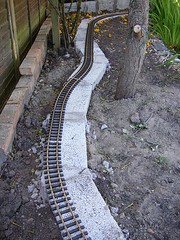 With the blocks for the track base set in concrete, it's time to put the track back. I thought I could remember how it all went but after several tries it became obvious that the exact positions eluded me.
With the blocks for the track base set in concrete, it's time to put the track back. I thought I could remember how it all went but after several tries it became obvious that the exact positions eluded me.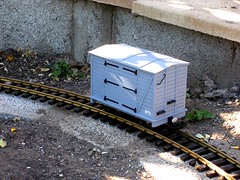 On the plus side, the levels seem OK. The first train, an IP Engineering WD box van, has been pushed around the circuit without mishap and it's pretty top heavy. OK, so this isn't much of a test train, it will be a while and many screws before one of the Isle of Man steam locos ventures out, but it's a start.
On the plus side, the levels seem OK. The first train, an IP Engineering WD box van, has been pushed around the circuit without mishap and it's pretty top heavy. OK, so this isn't much of a test train, it will be a while and many screws before one of the Isle of Man steam locos ventures out, but it's a start.
